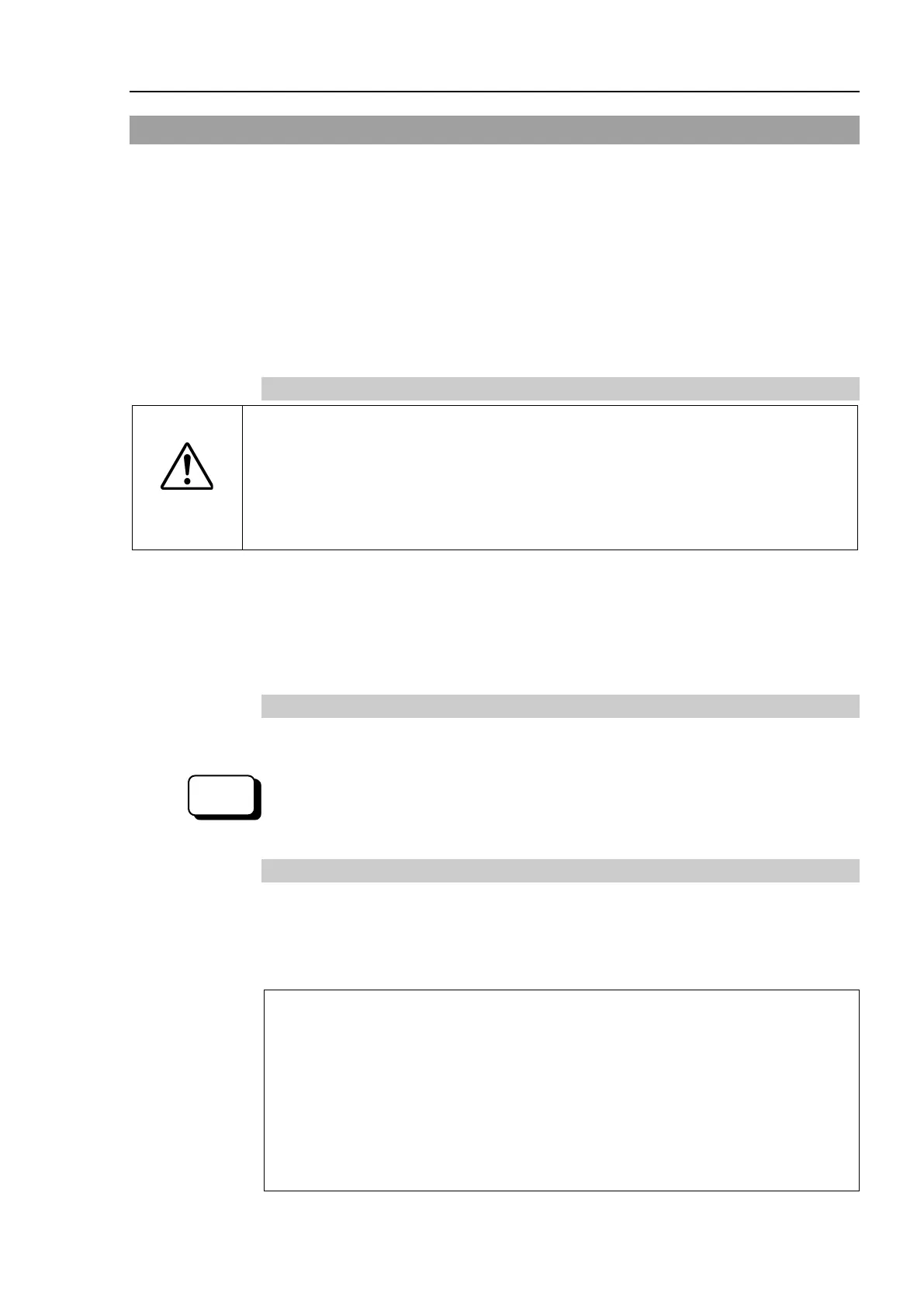Setup & Operation 4. Setting of End Effectors
LS20 Rev.4 43
4.3 Weight and Inertia Settings
To ensure optimum Manipulator performance, it is important to make sure that the load
(weight of the end effector and work piece) and moment of inertia of the load are within
the maximum rating for the Manipulator, and that Joint #4 does not become eccentric.
If the load or moment of inertia exceeds the rating or if the load becomes eccentric, follow
the steps below, “4.3.1Weight Setting” and “4.3.2 Inertia Setting” to set parameters.
Setting parameters makes the PTP motion of the Manipulator optimal, reduces vibration to
shorten the operating time, and improves the capacity for larger loads. In addition, it
reduces persistent vibration produced when the moment of inertia of the end effector and
work piece is larger than the default setting.
4.3.1 Weight Setting
CAUTION
■
The total weight of the end effector and the work piece must
not exceed 20 kg
LS20 series Manipulators are not designed to work with loads exceeding 20
.
Always set the Weight parameters according to the load. Setting a value that is
smaller than the actual load may cause errors, excessive shock, insufficient
function of the Manipulator, and/or shorten the life cycle of parts/mechanisms
.
The acceptable weight capacity (end effector and work piece) in LS20 series is 10 kg at
the default rating, 20 kg at the maximum. When the load (weight of the end effector and
work piece) exceeds the rating, change the setting of Weight parameter.
After the setting is changed, the maximum acceleration/deceleration speed of the robot
system at PTP motion corresponding to the “Weight Parameter” is set automatically.
Load on the Shaft
The load (weight of the end effector and work piece) on the shaft can be set by Weight
parameter.
Enter a value into the [Load inertia:] text box on the [Inertia]
panel ([Tools]-
anager]). (You may also execute the Inertia command from the [Command Window].)
Load on the Arm
When you attach a camera or other devices to the arm, calculate the weight as the
equivalent of the shaft. Then, add this to the load and enter the total weight to the Weight
parameter.
Equivalent Weight Formula
When you attach the equipment near
Arm #2:
When you attach the equipment to the end of Arm #2:
M
= M (L
1
)
2
/(L
1
+L
2
)
2
2
2
M
1
2
M
equivalent weight
weight of camera etc.
length of Arm #1
length of Arm #2
distance from rotation center of Joint #2 to center of gravity
of camera etc.
